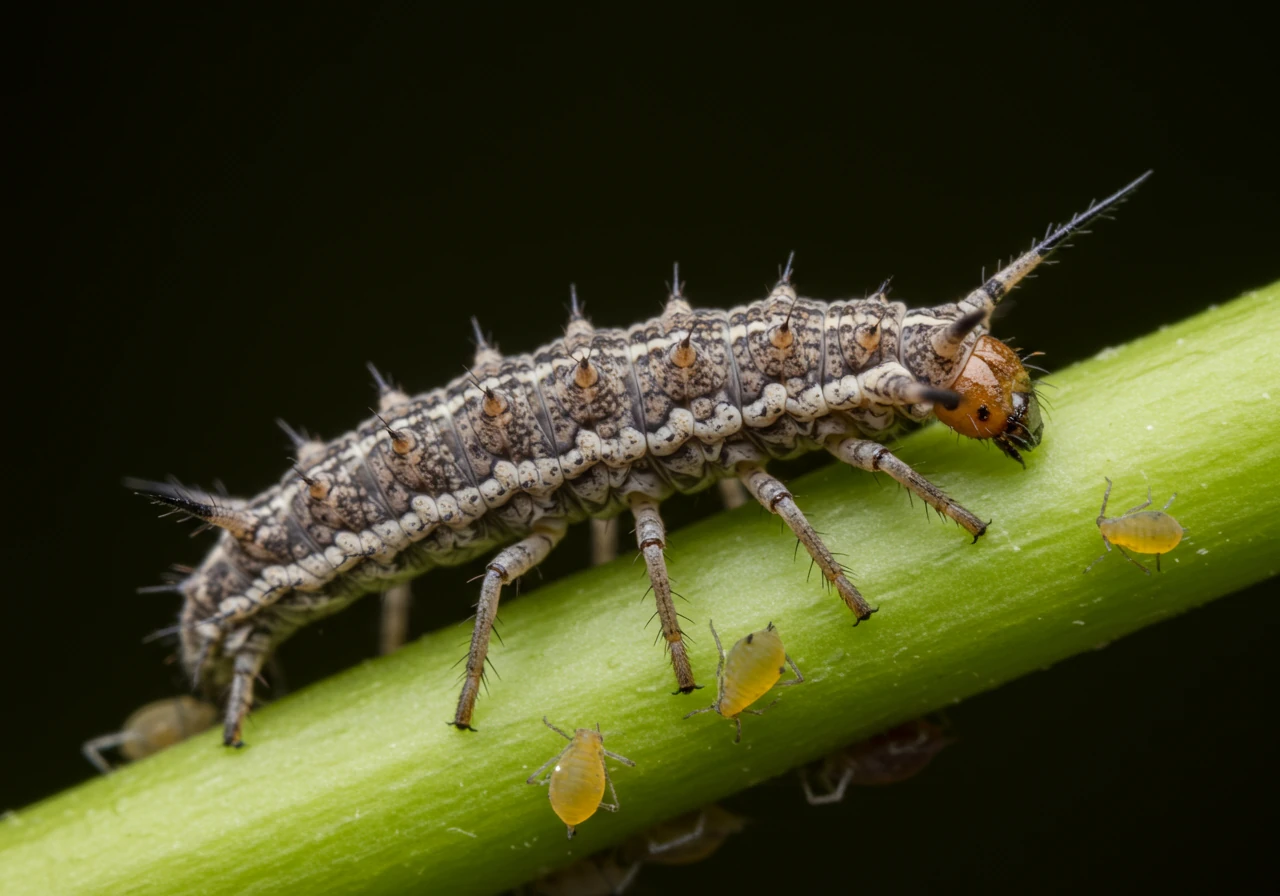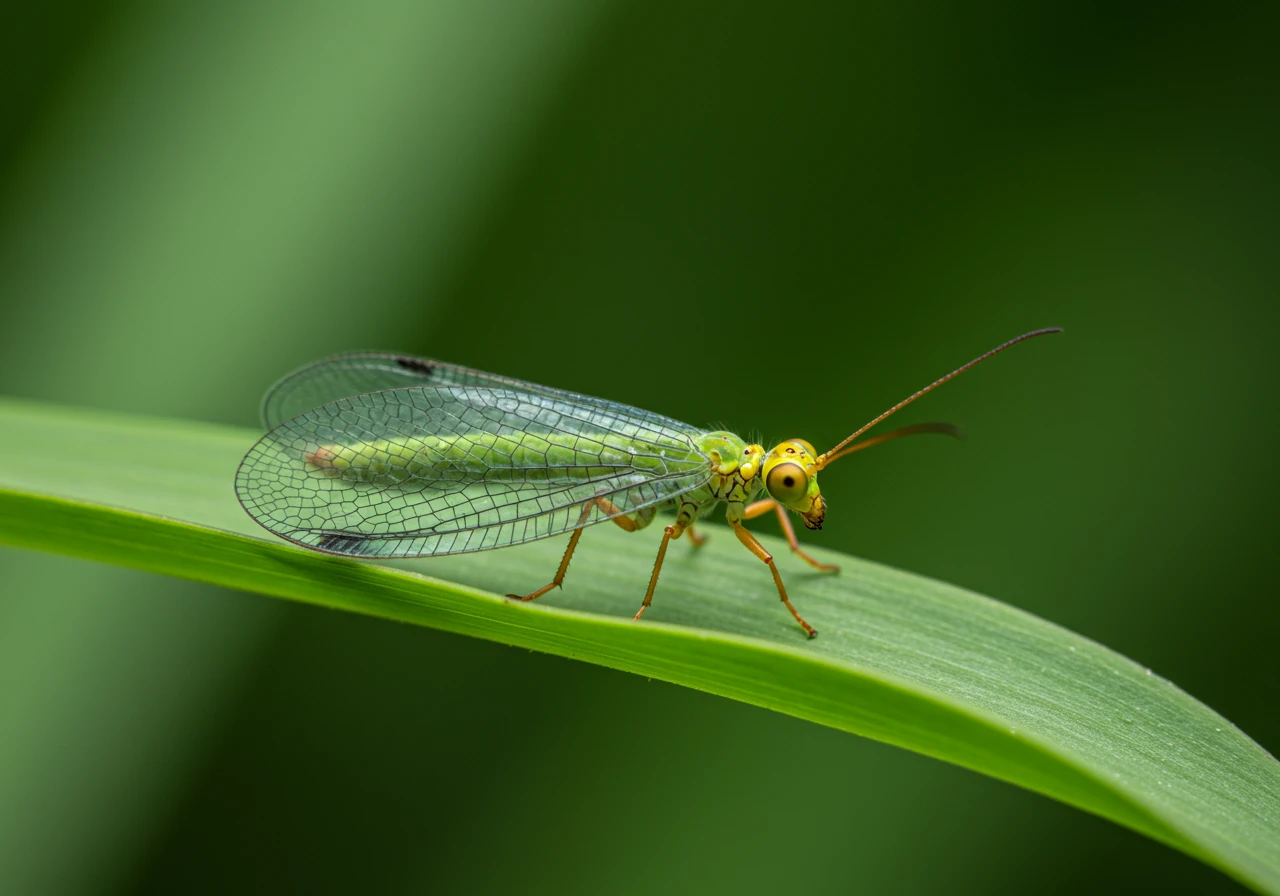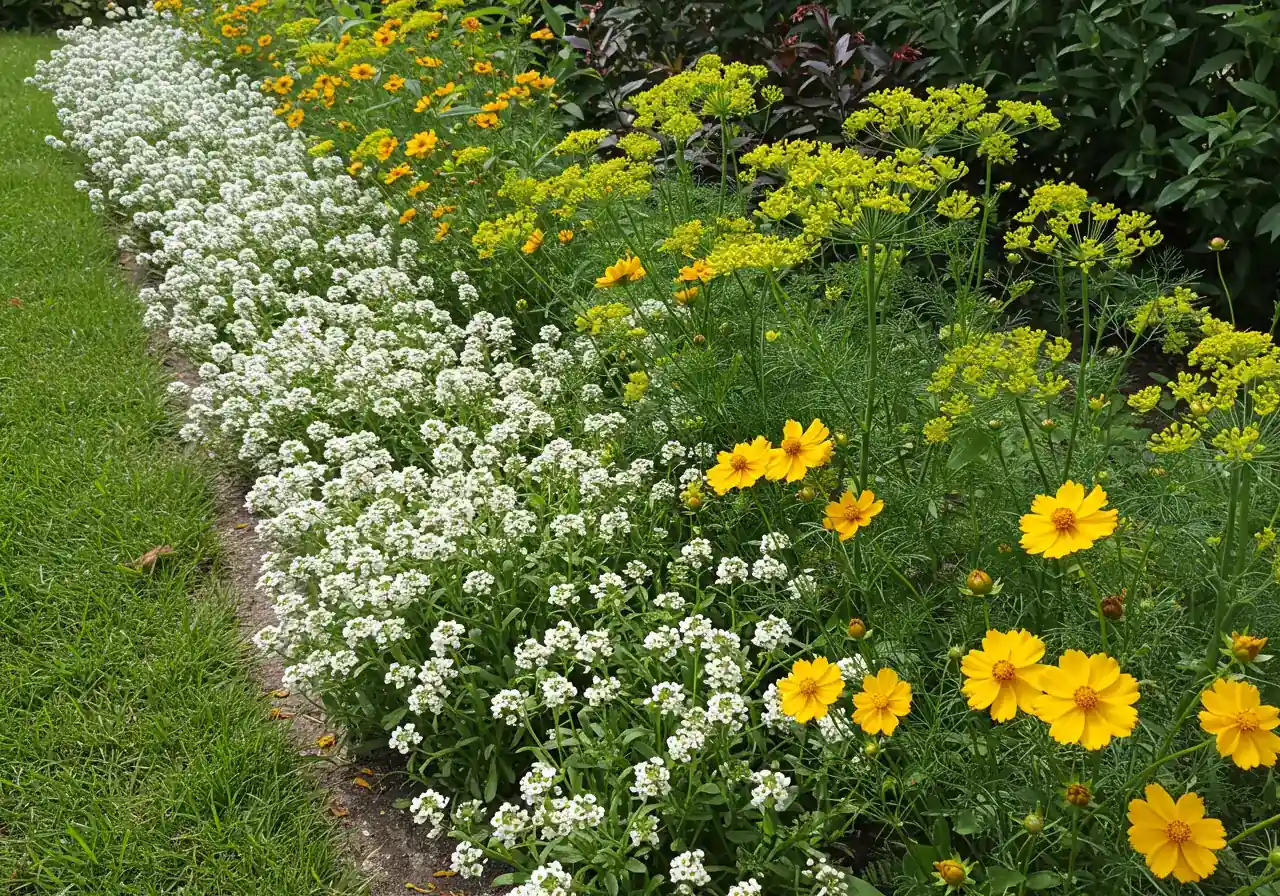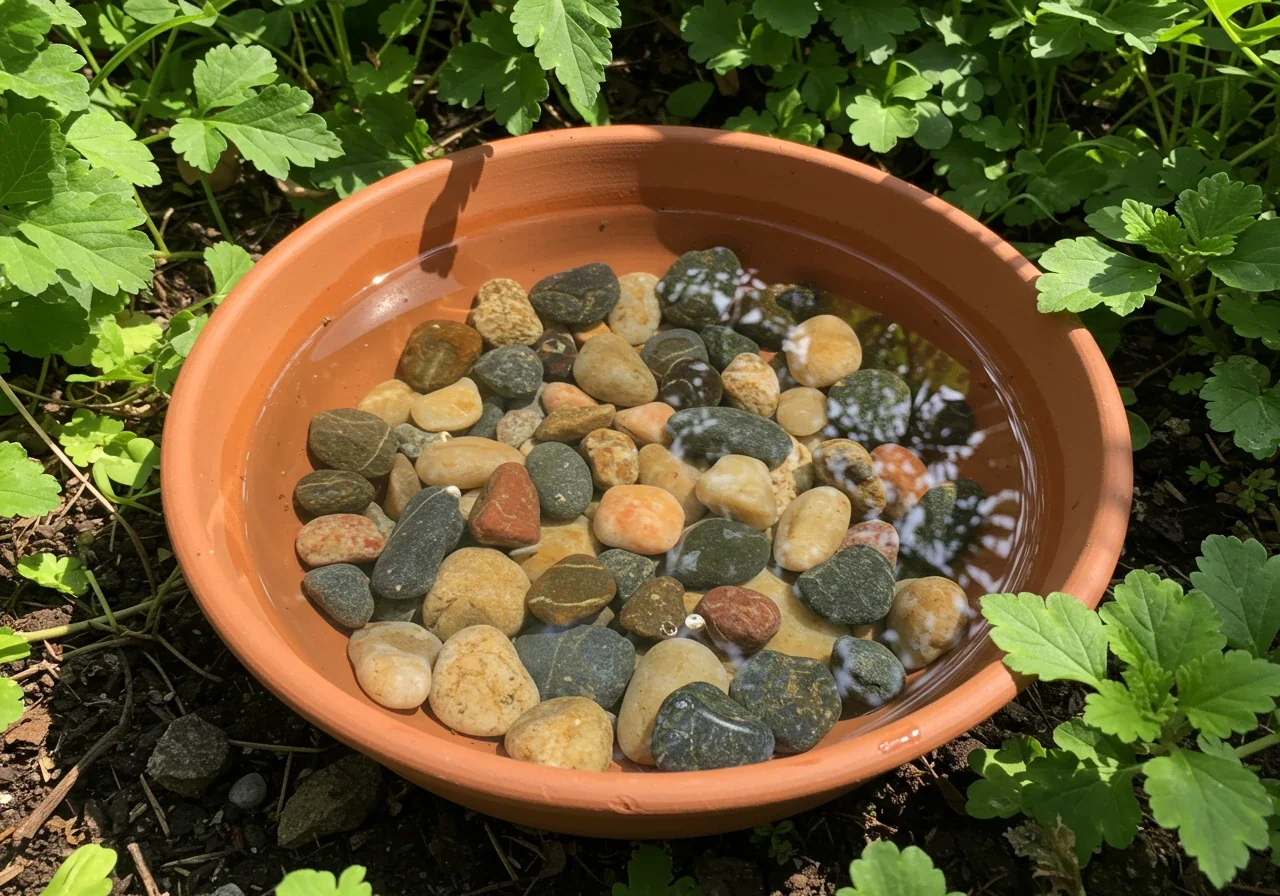Nepean Gardens: Attract Lacewings to Control Summer Pests
Quick Summary: Attracting Lacewings
- Lacewings are beneficial insects whose larvae ('aphid lions') voraciously eat garden pests like aphids, mites, and thrips.
- Attract adult lacewings by planting nectar/pollen-rich flowers (dill, alyssum, coreopsis).
- Support larvae by providing shelter (mulch, ground cover) and avoiding broad-spectrum pesticides.
- Offer a shallow water source with pebbles.
- Tolerate minor pest populations as food for larvae.
- Protect overwintering sites by leaving some leaf litter.
Ready to tackle pests naturally? Request a quote for expert garden care today!
Introduction: Welcoming Nature's Pest Control Crew to Nepean Gardens
Ah, summer in Nepean! Sunshine, backyard barbecues... and those tiny, uninvited guests turning your prized roses into an aphid buffet? If you're tired of waging war on garden pests and dreaming of healthier blooms, you're not alone. Homeowners across Ottawa, from Barrhaven right here to our Nepean neighbourhoods, know the struggle is real. Battling bugs can feel like a full-time job, sometimes making you want to throw your trowel in the air! Visit our Google My Business page to see how we help homeowners like you.
But before you reach for another spray bottle, what if we told you there’s a fascinating, natural solution fluttering nearby? It’s time to welcome nature's very own pest control crew: the amazing lacewings! These delicate beauties might look dainty, but their larvae (often called 'aphid lions') are seriously hungry heroes, with a huge appetite for aphids, mites, thrips, and other soft-bodied pests that plague our flower beds and vegetable patches. Think of them as your garden's elite, undercover security detail, working quietly behind the scenes. Let's explore how inviting these beneficial insects into your garden maintenance plan can make your gardening life a whole lot easier (and greener!).
Need help creating a pest-resilient garden?
Get a Free EstimateMeet the Lacewing: Your Garden's Undercover Ally
Okay, let's pull back the curtain on these fascinating little helpers!


So, who exactly are these lacewings fluttering around Ottawa gardens, from Nepean to Barrhaven? You might have spotted the adults without even realizing it. They're often mistaken for small, delicate moths or damselflies. Look closely, though! Adult lacewings typically have slender green or sometimes brownish bodies, long antennae, and their most striking feature: large, transparent wings that look like intricate, shimmering lace. Oh, and many boast beautiful, metallic golden or copper eyes – quite the garden fashion statement! They are generally nocturnal, so you might see them drawn to your porch light on a warm summer evening. While the adults are lovely, sipping nectar and pollen, they aren't the main pest-munching heroes.
The real MVPs of pest control are the lacewing larvae. Honestly, they look nothing like their elegant parents – think tiny, prehistoric alligators! These critters, often called "aphid lions," are typically greyish-brown, segmented, and boast some seriously impressive, sickle-shaped jaws used for grabbing prey. They are voracious predators during this stage, patrolling your plant stems and leaves like tiny garden guardians. Finding these little critters means your natural pest defence is active! A healthy garden environment is key to supporting them; ensuring good soil health, like through proper Nepean Spring Lawn Aeration Ottawa, contributes to the overall ecosystem they thrive in.
Keeping an eye out for these larvae (and their tiny, stalked eggs) is a great habit. Knowing what they look like helps you avoid accidentally removing them during garden cleanup. Maintaining a balanced garden, perhaps through thoughtful Nepean Fall Garden Prep & Colour Winter Tips, can provide overwintering spots for beneficial insects like lacewings. Even routine maintenance, like performing essential Nepean Fall Garden Health Checks, helps ensure your garden remains a welcoming place for these allies. And remember, a truly thriving garden involves caring for all its components, right down to protecting pipes with Nepean Irrigation Winterization to Avoid Pipe Damage. If managing all these garden tasks feels overwhelming, exploring professional Landscaping and Yard Maintenance Services can be a great way to keep your yard healthy and inviting for beneficials. Sometimes, a targeted Nepean Yard Cleanup Service can also help reset the balance, clearing excessive debris while being mindful of helpful insect habitats. Spotting lacewings, especially the larvae, is like finding a tiny seal of approval for your garden's health!
Why Roll Out the Welcome Mat? The Perks of Attracting Lacewings
So, we've met the lovely lacewings and their hungry offspring. But why go to the trouble of actually encouraging them to hang out in your Nepean garden? Isn't it easier just to blast those pesky aphids with a spray? Well, hold your hosepipe there, partner! Inviting lacewings is like hiring a tiny, dedicated security force that works for free (well, for room and board, really). Let's break down the amazing perks:
- Nature's Tiny Terminators: Forget broad-spectrum chemical warfare. Lacewing larvae, those 'aphid lions,' are precision hunters. They absolutely love munching on common garden villains like aphids, spider mites, thrips, whiteflies, mealybugs, and even the eggs of other annoying insects. They seek out the pests, meaning less work for you patrolling with a spray bottle. Gardeners across Ottawa, from Manotick to right here in Nepean, appreciate this natural approach. A well-timed Marionville Yard Cleanup Service or a local Nepean cleanup can even help reduce overwhelming pest populations *before* your lacewing reinforcements arrive, creating a more balanced starting point.
- Eco-Friendly & Oh-So-Safe: Chemical pesticides don't just kill the bad bugs; they often take out the good guys too, like bees, ladybugs, and yes, lacewings! Plus, residues can linger on your plants and potentially harm pets or beneficial soil organisms. Lacewings, on the other hand, are completely safe, targeted, and leave behind nothing but healthier plants. Choosing beneficial insects over chemicals is a fantastic step towards sustainable landscaping and aligns with responsible gardening practices recommended by resources like the Master Gardeners of Ottawa-Carleton. Proper Garden Maintenance techniques, like avoiding harsh chemicals, are key to letting them thrive.
- Biodiversity Boosters: A garden humming with different kinds of life is a healthier, more resilient garden. Lacewings are part of this intricate web. By providing habitat for them, you're contributing to local biodiversity in the greater Ottawa area, including communities like Greely. A diverse insect population means a more stable ecosystem, better able to handle pest outbreaks naturally. Supporting this balance is core to our philosophy; you can learn more About Us and our commitment to greener yards. Check out the City of Ottawa's gardening resources for more on local biodiversity.
Quick Comparison: Lacewings vs. Chemical Sprays
| Feature | Lacewing Larvae | Chemical Sprays |
|---|---|---|
| Target | Specific soft-bodied pests | Often broad-spectrum (kills good & bad) |
| Safety | Safe for pollinators, pets, people | Potential risks, requires caution |
| Residue | None | Can leave chemical residue |
| Long-Term | Builds a sustainable defence | Can harm soil, require reapplication |
| Resistance | Pests don't develop resistance | Pests can develop resistance |
Ultimately, welcoming lacewings means less stress, fewer chemicals, and a more vibrant, naturally balanced garden. It's a win-win-win! Preparing your garden might involve tidying up, and a thorough Ottawa Garden Clean Up Service can set the stage beautifully. If you're keen on making your garden a haven for these helpful critters but aren't sure where to start, feel free to Contact Us for advice. We believe in clear communication about our services and how they contribute to garden health; our straightforward Terms and Conditions reflect this commitment to transparency. Rolling out the welcome mat for lacewings is one of the smartest gardening moves you can make!
Explore our full range of eco-friendly yard solutions!
View Our ServicesSetting the Table: How to Attract Adult Lacewings to Your Yard
Okay, let's set the stage – or rather, the table – for our lovely lacewing guests! Attracting the adult lacewings is key because they're the ones who lay those precious eggs, bringing the hungry aphid lions to your garden party. Think of it like sending out fancy dinner invitations to the parents, hoping they'll bring their kids along later.

So, how do we roll out the welcome mat and ring the dinner bell for adult lacewings in our Ottawa yards, whether you're gardening in Richmond or maintaining a larger property near Metcalfe? It’s simpler than you might think! Unlike their larvae, adult lacewings aren't usually predators. Instead, they primarily feed on nectar, pollen, and honeydew (that sugary stuff aphids leave behind – bonus!).
Your main strategy? Plant flowers they love! Think small, accessible blooms packed with nectar and pollen. Here are some fantastic choices that thrive in our Ottawa climate:
- Herbs Allowed to Flower: Let plants like dill, fennel, cilantro (coriander), and parsley bolt (go to flower). Lacewings adore these tiny blossoms.
- Classic Garden Favourites: Sweet alyssum (a low-growing carpet of tiny white flowers), coreopsis (Tickseed), cosmos, and yarrow are excellent choices.
- Native Powerhouses: Plants like goldenrod might get a bad rap for allergies (often mistakenly!), but they are superstars for beneficial insects later in the season. Queen Anne's Lace is another good one, though be mindful it can spread. For more on native plants suitable for our region, resources like the Rideau Valley Conservation Authority can be helpful.
The secret sauce here is providing a continuous buffet throughout the growing season. Planting a variety ensures there's always something blooming. Healthy plants start with healthy soil, so investing time in proper Soil Preparation Techniques is fundamental to growing these lacewing magnets effectively.
Beyond the floral buffet, adult lacewings appreciate a little hydration station. A shallow dish of water with pebbles or marbles sticking out gives them a safe place to land and drink without accidentally taking an unwanted swim. Think tiny garden spa!
Now, here’s the crucial part: avoid broad-spectrum pesticides like the plague! These chemicals don't discriminate; they'll wipe out your beneficial lacewings just as easily as the pests. Opt for targeted solutions or, better yet, let your lacewing larvae do the heavy lifting. Embracing this approach is central to sustainable landscaping. If you use professional services, ensure they prioritize eco-friendly methods. Good City Garden Maintenance Service providers understand the importance of protecting beneficial insects. Sometimes, a targeted cleanup is needed, perhaps after storm damage or at season's end. Services like an Ottawa Property Cleanup Service or even specialized options like a Metcalf Property Cleanup Service for specific areas can help reset your yard, but always communicate your desire to protect beneficial habitats. This even applies to managing vegetation near municipal boundaries; our team handling City Property Cleanup Service tasks are mindful of these ecological considerations. Before engaging any service, it's wise to understand their approach and commitment to practices like these, often detailed in their service agreements or privacy policy concerning client preferences.
By offering food, water, and a safe environment free from harmful chemicals, you're creating an irresistible invitation for adult lacewings to visit, stay, and raise their pest-patrolling families right in your own backyard.
Keeping the Kids Happy: Supporting Lacewing Larvae
Okay, so we've convinced the adult lacewings to stop by with some sweet floral treats. Now, let's focus on their little superstars – the larvae, or 'aphid lions'. Keeping these hungry kids happy is crucial for effective pest control. Think of it like hosting teenagers: you need to provide plenty of food and a comfy place to hang out, while ensuring their environment is safe!
Alright, garden guardians, let's talk about making your yard the ultimate playground for lacewing larvae. These tiny predators might look tough, but they need the right conditions to thrive and protect your plants, whether you're landscaping in central Ottawa or enjoying the greener spaces of Kars or Osgoode.
First things first: Food! This might sound counterintuitive, but you need some pests for the larvae to eat. If your garden is absolutely spotless and pest-free (highly unlikely, let's be honest!), the arriving aphid lions will just starve or move on. The goal isn't zero pests; it's a balanced ecosystem where pests are kept in check. Tolerate a small number of aphids or mites, especially early in the season. See them as appetizers that keep your lacewing crew interested and ready for any major outbreaks. They are nature's pest patrol, after all!
Next up: Shelter and Safety. Lacewing larvae aren't exactly built for speed across vast, open ground. They need places to hide from predators (like birds) and harsh sun, and pathways to move around easily.
Here’s how to create a larva-friendly habitat:
- Mulch Magic: A good layer of organic mulch (like shredded bark or wood chips) provides essential humidity and hiding spots. It also improves the soil, supporting the healthy plants the larvae patrol. Remember, robust plants start with good mulching and edging practices which tie into good soil preparation.
- Ground Cover & Diverse Plantings: Low-growing ground covers and a mix of plant heights and textures create a more complex environment. This gives larvae safe passage routes and more hunting grounds. Think leafy greens, sprawling herbs, or even just letting things get a little wild in certain areas.
- Leave the Leaves (Strategically): While a massive fall cleanup might look tidy, completely bare soil removes crucial overwintering habitat for lacewings and other beneficials. Consider leaving some leaf litter under shrubs or in garden beds over winter. A thorough property clean up might be needed sometimes, but try to leave pockets of shelter. If you hire a professional service like our Metcalf Yard Cleanup Service, communicate your desire to protect beneficial insect habitats. Not all cleanups need to be scorched earth; a balance is key.
Crucially important: Avoid Harmful Practices.
- Ditch the Broad-Spectrum Sprays: We mentioned this for adults, but it's even more critical for larvae. They are highly susceptible to insecticides. If you must treat a severe infestation, use targeted, less harmful options like insecticidal soap, and apply it carefully, avoiding areas where you see beneficials.
- Water Wisely: Avoid blasting plants with high-pressure water jets unless absolutely necessary for pest removal, as this can dislodge and harm larvae. Gentle watering is best. Proper watering is also part of good lawn care and garden health.
Seasonal Considerations in Ottawa:
Our Ottawa growing season is precious! Support larvae during the summer by ensuring continuous food and shelter. As fall approaches, the focus shifts to providing overwintering sites (like that leaf litter or mulch layer). Come spring, avoid overly aggressive tidying too early; give the overwintering beneficials a chance to emerge. Managing this balance can sometimes feel tricky, especially after a long winter. If you find your yard needs a significant reset, a helpful Ottawa yard cleanup service can tackle the big stuff, but be sure to discuss mindful practices for habitat preservation. Similarly, maintaining public-facing areas requires care; good city garden clean up service providers understand this balance. Even larger scale professional city yard cleanup operations are increasingly aware of ecological impacts. Understanding the value these practices bring, versus the cost of intervention, is important; it's always useful to share feedback on landscaping estimates to ensure services align with your eco-friendly goals.
By providing food, shelter, and a safe environment, you’re not just helping lacewing larvae – you're fostering a healthier, more resilient garden ecosystem right here in Ottawa. Happy larvae mean fewer pests and happier plants!
Lacewing Power-Ups: Quick Tips for Your Nepean Garden
Okay, let's turbocharge your Nepean garden's natural defences! We've talked about who lacewings are and why they're awesome allies. Now, let's get down to the nitty-gritty: quick, actionable power-ups you can implement right now to make your garden irresistible to these pest-munching heroes. Think of these as easy wins for a healthier, happier backyard ecosystem, whether you're in Nepean, Barrhaven, or tending a patch out near Greely.

Ready to roll out the green carpet for lacewings? Here are some simple steps you can take:
1. Plant a Lacewing Lunch Counter
Remember how adult lacewings love nectar and pollen? Sprinkle their favourite snacks throughout your garden. Tiny flowers are best! Tuck some sweet alyssum along borders, let a patch of dill or cilantro go to flower, or plant some sunny coreopsis. Thoughtful Material Selection when choosing plants specifically for beneficial insects makes a big difference. It’s about creating an inviting buffet!
2. Go Easy on the "Tidy"
Resist the urge to make your garden look like a pristine showroom floor, especially in fall and early spring. Leave some leaf litter under shrubs or perennials over winter. Avoid cutting *everything* back aggressively in the fall. A bit of "managed messiness" provides crucial habitat. While a full Marionville Property Cleanup Service or Nepean clean up might be necessary sometimes, try to leave some natural areas untouched.
3. Just Add Water (Safely)
Like all creatures, lacewings need water. Place a shallow dish (like a plant saucer) filled with pebbles or marbles and water in a shaded garden spot. The pebbles give them safe landing zones to drink without drowning. Easy peasy!
4. Ditch the Harsh Chemicals
This is a big one! Broad-spectrum pesticides kill indiscriminately. If you have a pest problem, try spot-treating with insecticidal soap first, or even just a strong spray of water for aphids. Be patient and see if the lacewing larvae arrive. Embracing this natural control is key to amazing garden Transformations where nature does the heavy lifting.
5. Know When to Call for Backup (Mindfully)
Sometimes, managing the garden habitat can feel overwhelming. Getting professional help is okay! If you need significant cleanup or landscaping work, communicate your goal of supporting beneficial insects. Choose reputable services; we value your trust and outline how we handle information in our Privacy Policy.
By implementing even a few of these quick tips, you'll significantly boost your Nepean garden's appeal to lacewings. It’s about creating a welcoming, safe environment where these tiny garden guardians can thrive and help keep those pesky pests in check, naturally! Happy gardening!
Lacewing Fast Facts & Pest Control Prowess
Lacewing Life Cycle
Lacewings undergo complete metamorphosis:
- Egg: Often laid singly or in groups on slender stalks, usually near pest colonies.
- Larva: The 'aphid lion' stage. Voracious predator, molts several times as it grows. This is the primary pest-controlling stage.
- Pupa: Larva spins a silken cocoon, often in a sheltered spot, to transform.
- Adult: Emerges from the cocoon. Adults feed on nectar/pollen and lay eggs to start the cycle anew.
Supporting all life stages is key for a self-sustaining population in your garden.
What Lacewing Larvae Eat
Lacewing larvae have a broad appetite for common garden pests:
- Aphids (their favorite!)
- Spider Mites
- Thrips
- Whiteflies
- Mealybugs
- Scale Insects (young stages)
- Leafhoppers
- Small Caterpillars
- Insect Eggs (various species)
This diverse diet makes them incredibly valuable for managing multiple types of pest issues naturally.
Pest Control Impact (Hypothetical Example)
Let's visualize the potential impact. Imagine the average number of aphids consumed per day by different predators:
*Note: Consumption rates vary greatly based on species, temperature, and prey availability. This is illustrative.
As you can see, lacewing larvae are highly effective predators, often consuming more aphids per day than even ladybug larvae. Encouraging them provides significant natural pest control.
Your Nepean Lacewing Questions Answered
Got questions about bringing these lacy-winged wonders into your Nepean garden? You're not alone! Homeowners across Ottawa often ask about these beneficial bugs. Let's tackle some common queries with practical answers to help your landscaping thrive.
Relax! Adult lacewings are gentle nectar-sippers and pose absolutely no threat to people or pets. Their tiny larvae, the 'aphid lions,' *do* have pincers for grabbing pests, but they are far too small to harm humans or furry friends. They're focused on munching aphids, not Fido! Your family and pets are perfectly safe around these garden helpers.
Yes, you can purchase lacewing eggs or larvae online or from some specialized garden suppliers. This can give your garden pest control a jumpstart! Release them in the evening near pest hotspots. It’s a fantastic way to boost your garden's natural defences, and we'd like to say Thank You for considering such eco-friendly gardening methods! Finding local suppliers might require searching online for "beneficial insects Canada" or checking with larger garden centers.
Patience, grasshopper (or should we say, lacewing)! While larvae start eating immediately, noticeable pest reduction might take a week or two, depending on the infestation level and environmental conditions. It's a natural process, not an instant chemical fix. Keep providing that welcoming habitat, and they'll get to work protecting your landscaping investment. Keep an eye on your plants - you should gradually see fewer pests.
Lacewings are mighty, but even aphid lions have their limits! For severe infestations, especially common in rapidly developing areas like Barrhaven, they might need help. Consider gently knocking back the worst of the pests first (like with a strong water spray). Sometimes, getting professional help for an initial reset, like a targeted Metcalf Garden Clean Up Service or similar assistance like a Marionville Garden Clean Up Service if you're further out, can reduce overwhelming numbers, allowing lacewings to effectively manage the rest.
Good question! Some lacewing species overwinter as adults or pupae, finding shelter in leaf litter, under tree bark, or in sheds. Protecting these overwintering sites is key. Avoid overly aggressive fall cleanups. Deliberately creating habitat during landscaping projects, perhaps through thoughtful professional Garden Install services, can provide crucial winter refuges, helping maintain a population year after year.
Excellent thinking! When planning new landscaping, incorporate plants known to attract adult lacewings (like alyssum or dill) right from the beginning. Ensure good soil health and plan for diverse plantings. Even coordinating your lawn care, like ensuring quality Sod Installation results in a healthy lawn that complements diverse garden beds, contributes to a balanced ecosystem that supports beneficial insects like lacewings.
Conclusion: Let Lacewings Be Your Garden Guardians in Nepean
So there you have it! Inviting lacewings into your Nepean garden isn't some complicated science experiment – it's more like rolling out the welcome mat for nature's tiny, pest-munching superheroes. Seriously, think of the perks: fewer aphids attacking your prize-winning petunias, less reliance on potentially yucky chemical sprays, and a garden buzzing with healthy, balanced life. It's a fantastic approach for sustainable gardening, benefiting yards across the Ottawa region, whether you're enjoying the river views in Manotick or cultivating beauty further out near Embrun.
Creating a lacewing haven is easier than you might think. Plant some flowers with tiny blooms (remember that dill or sweet alyssum?), ditch the broad-spectrum pesticides that harm everyone, and leave a little natural shelter here and there, especially over winter. Partnering with these beneficial insects makes gardening smarter, not harder, allowing you to enjoy your outdoor space more and stress about pests less.
Key Takeaway: A garden designed with beneficial insects in mind is a healthier, more resilient, and ultimately more enjoyable garden. Lacewings are powerful allies in achieving this natural balance.
Ready to transform your yard into a haven for these garden guardians but not sure where to begin? Give us a shout to explore how our landscaping services can help build a welcoming ecosystem tailor-made for beneficial insects. Curious about other eco-friendly garden tips and tricks? Browse our blog for more inspiration and practical advice like tips for fall garden prep. Plus, we love seeing nature at work in local gardens! Share your photos or stories of finding lacewings (especially those cool-looking larvae!) on our social media page. Let these amazing insects become your garden's best defence, working tirelessly so you don't have to!
Ready for a healthier, pest-managed garden the natural way?
Get Professional Help With Your Garden Maintenance
